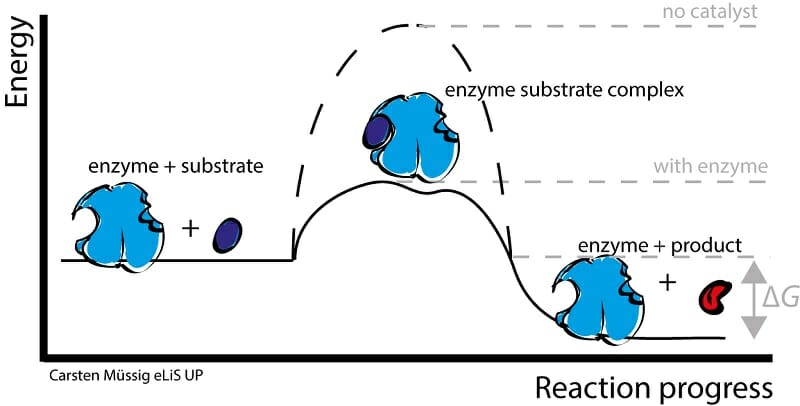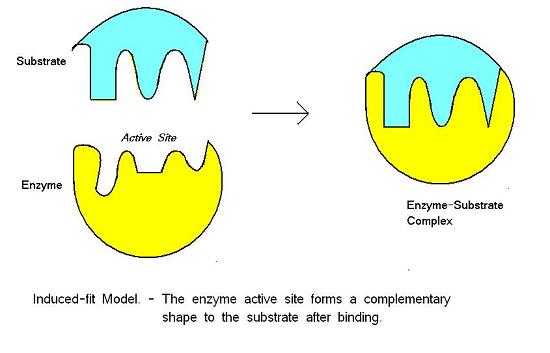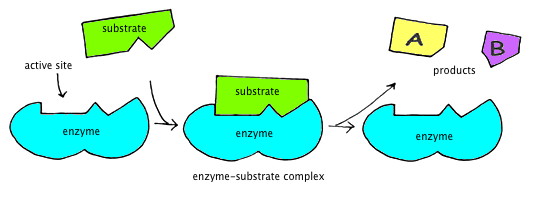Explain the Different Parts of an Enzyme-substrate Complex
The general name that chemists use for a chemical entity that increases the. Enzyme-Substrate Complex posted Nov 7 2014 1024 AM by William Sturdivant updated Dec 5 2014 804 AM A substrate is a molecule upon which an.

Enzyme Substrate Complex Definition Examples Biology Dictionary
Once the reaction is.

. Binding of the substrate to the enzyme involves noncovalent bonds such as hydrogen bonds ionic attractions hydrophobic bonds and van der Waals interactions. They create the conditions needed for biochemical reactions to happen fast. In the above illustration enzyme E binds with substrate S forming an enzyme-substrate complex ES.
An enzyme substrate complex is. Substance that is being acted upon. The chemical groups at.
Could someone explain to me exactly what the enzyme substrate complex does and how its important when catalyzing a reaction. The substrate causes a conformational change or shape. The enzyme substrate complex is a temporary molecule formed when an enzyme comes into perfect contact with its substrate.
The point where the substrate is bound on the active site is known as the. A part of the enzyme called the active site is the pockets or crevices where the substrate fits. Enzymes are lifes great facilitators.
An enzyme-substrate complex is formed when a subtrate molecule binds with the active site of an enzyme that is of similar shape and size. A substrate is loaded into the active site of the enzyme or the place that allows weak bonds to be formed between the two molecules. Learn vocabulary terms and more with flashcards games and other study tools.
Following the ES complex formation E and S interaction. When the enzyme is bonded to the substrate we call this the enzyme-substrate complex. He proposed that the substrate and enzyme formed some.
See answer 1 Best Answer. Terms in this set 12 substrate. The enzyme slightly changes shape as it bonds with the substrate to create the enzyme-substrate complex.
The substrate bonds to a small area of the enzyme termed the active site. After the reaction is complete the enzyme releases a product the. The word ribozyme is derived from the ribonucleic.
A theory to explain the catalytic action of enzymes was proposed by the Swedish chemist Savante Arrhenius in 1888. Only the enzyme-substrate complex seems to be reduced at a. Start studying Parts of the Enzyme-Substrate Complex Process.
The ancestors of the horse were much larger and had four toes. As they evolved they grew smaller and their toes fused into one hoofThey evolved away from eating leaves. The enzyme substrate complex is a temporary molecule formed when an enzyme comes into perfect contact with its substrate.
Enzyme Substrate Complex Definition. The formation of the enzymesubstrate complex at cytochrome P450 is the triggering event for the monooxygenation process. The macromolecular components of all enzymes consist of protein except in the class of RNA catalysts called ribozymes.
A protein that breaks things down hydrolysis ds and performs chemical reaction. E S ES EP E P.

Enzymes Mhcc Biology 112 Biology For Health Professions


No comments for "Explain the Different Parts of an Enzyme-substrate Complex"
Post a Comment